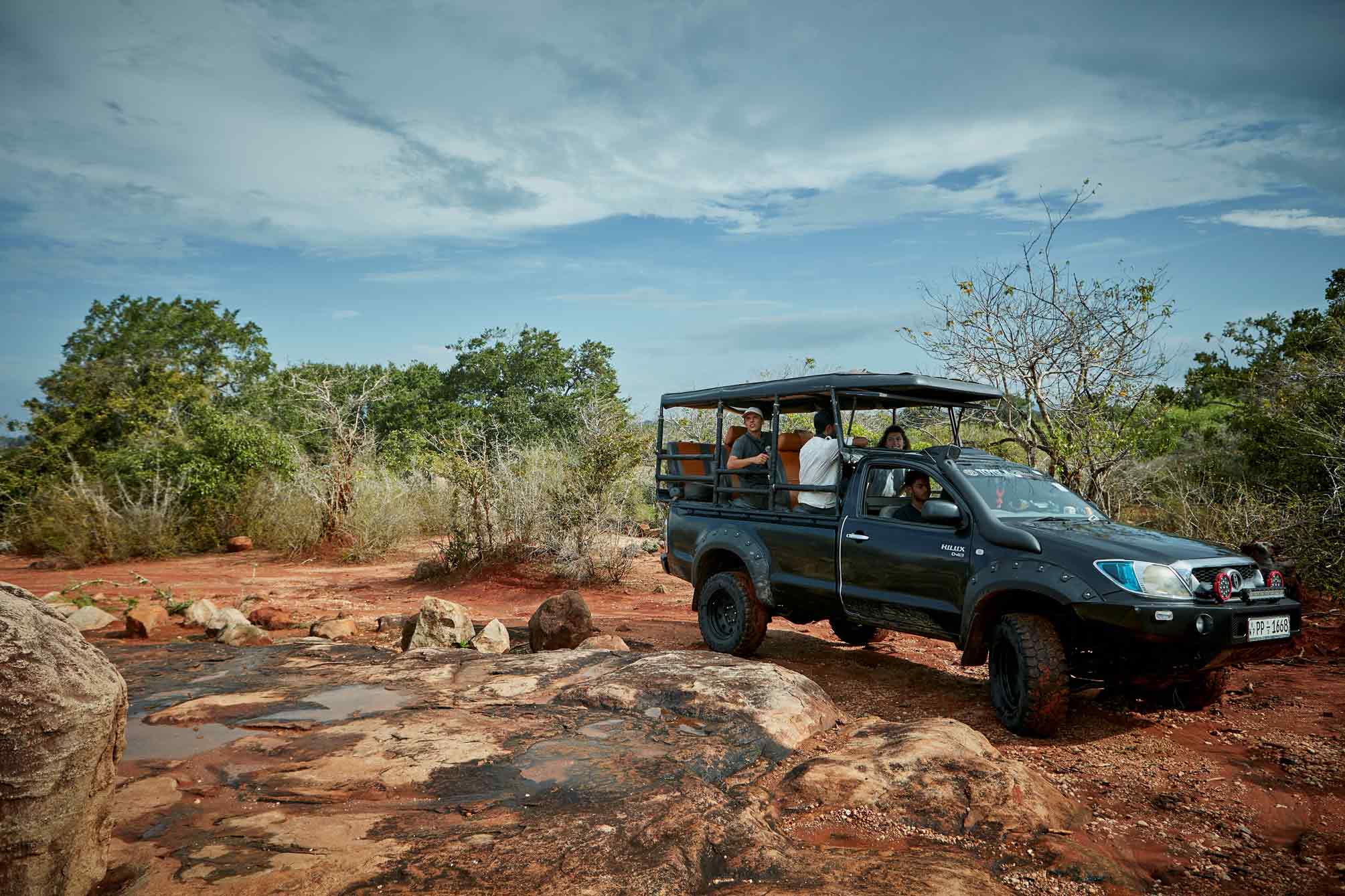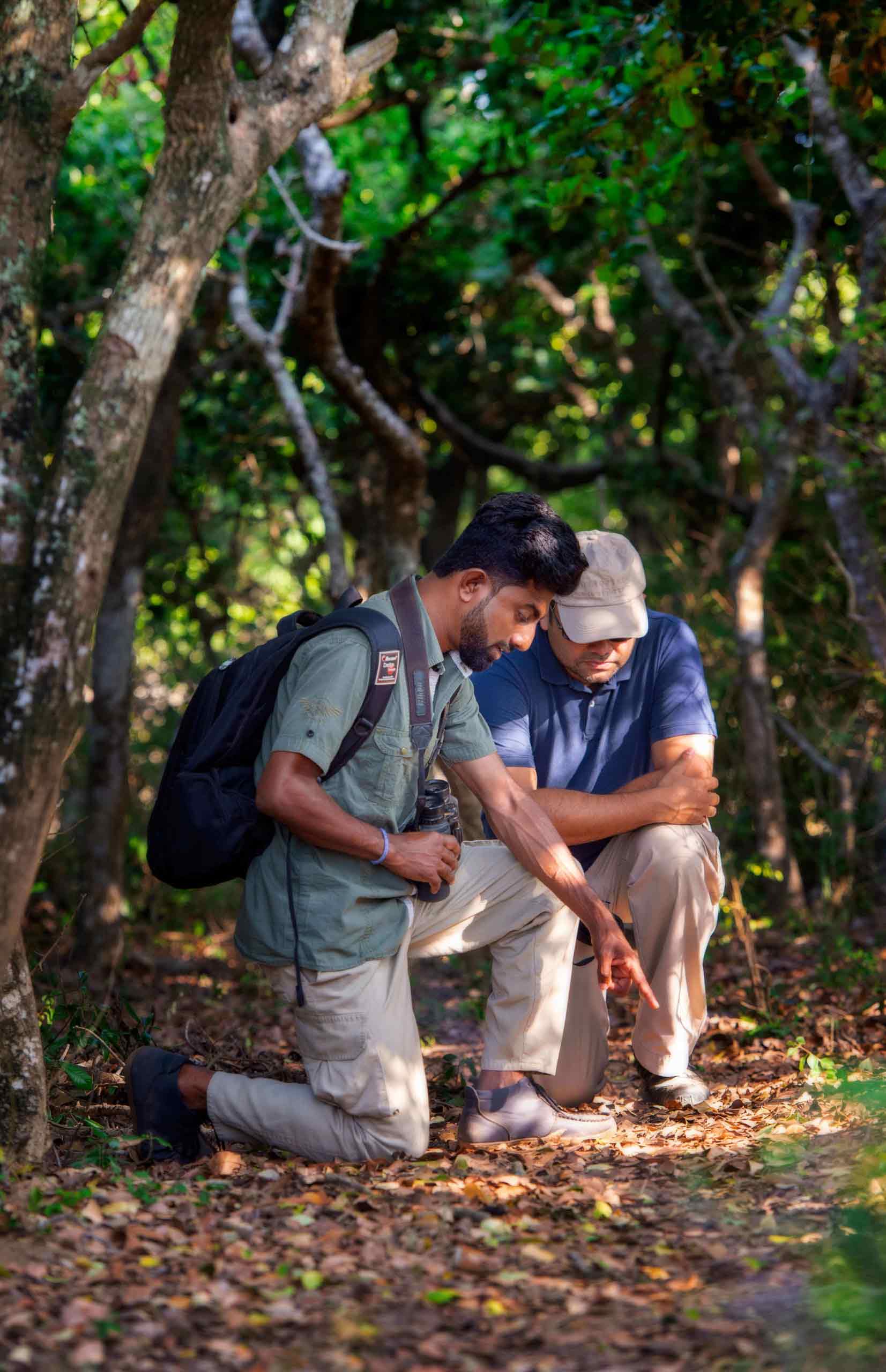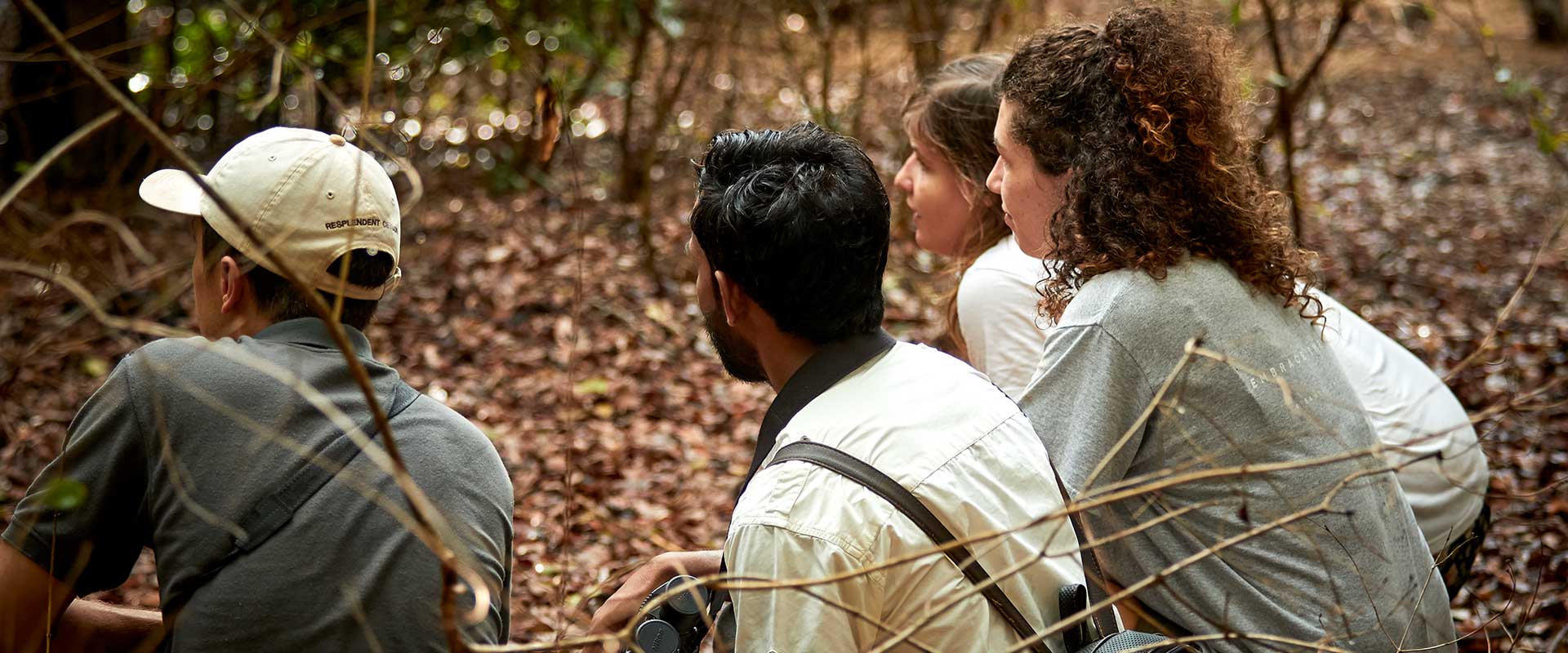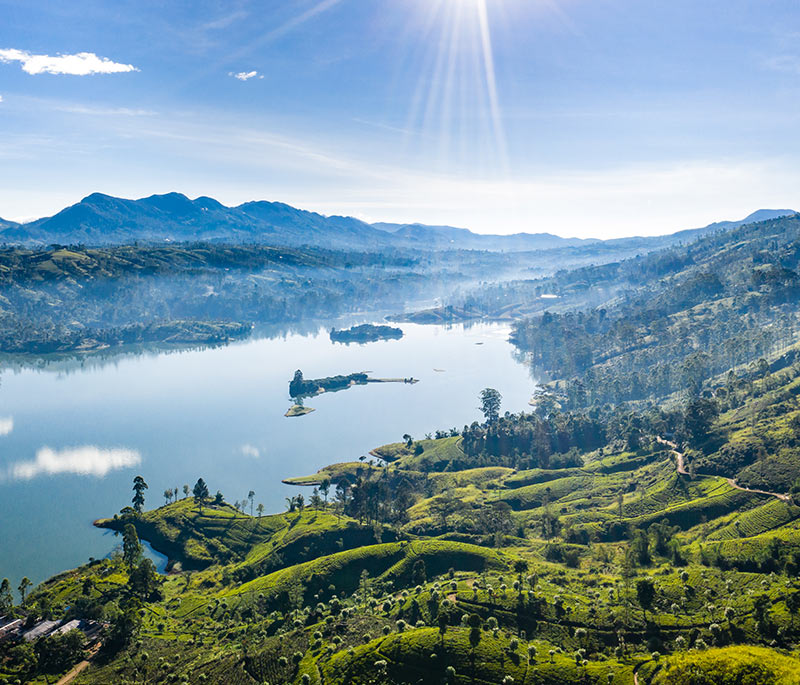The Resplendent Safari
Wild Coast Lodge redefines “safari” as a holistic wilderness experience. We are blessed with diverse habitat, ecology and scenery across the five sectors of the Yala National Park Complex and Bundala National Park, which is a Ramsar Wetland. We aspire to showcase the entire spectrum of nature. While leopards play a leading role in our theatre of the wild, they are not the only actor on our stage – from our geology, botanical diversity, critters, mammals, birds and reptiles. What sets our safari experience apart is that we take wildlife ethics seriously and do this by having a two-pronged approach. First, we take steps to ensure that our activities have minimal impact on animal behaviour; second, we try to contribute effectively to wildlife conservation.
Ethical Safaris – Conduct on Game Drives
Our game drive experience differs from that of a South African Private Game Reserve in that we operate in a public national park; however, our passionate rangers are experienced, knowledgeable, have an eye for detail and are well-versed in how to showcase the entire spectrum of biodiversity found in our jungles. They are also adept at interpreting the signs of the wild to deliver a fascinating narrative to make our game drives a distinct experience.
Therefore, we avoid crowded sightings, we ensure an animal at a sighting has adequate space and leave a sighting if the animal appears uncomfortable in our presence.
For safari vehicles, we work with the local community, and all drivers and vehicles have been vetted for skill, quality and guest safety. All our drivers are governed by a strict code of conduct that we enforce to ensure conduct in the park is exemplary.

Education: Bushwalks and Coastal walks
Our guided bush walk, in the company of a qualified and trained Wild Coast Lodge ranger, is a signature experience. A bush walk is, without a doubt, the most immersive and interesting way to appreciate the wilderness. Bushcraft is the art of reading the signs of the jungle – taking what would appear to be random pieces of information to the untrained eye and stitching them together to bring the wilderness to life.
During the walk, our ranger will find, identify and interpret footprints, droppings, animal sounds and bird calls, even broken branches, etc., in a safe yet fascinating manner. Guests also get the chance to observe wildlife at a safe distance, intimately. The art of “bushcraft” is as old as time, but the combination of loss of wilderness habitat around the world and wildlife experiences being increasingly based on jeep-safaris makes the dying art of bushcraft increasingly valuable.
Exploring the coastline is also a fascinating experience.
Support Research Conservation – Deployment of Camera Traps
Seven camera traps were placed on active game paths within a 1.5 km radius of the lodge (we are located in the buffer zone of Yala National Park — an extension of forest that forms an informal layer of protection to the park boundary). Our camera traps collect images of biodiversity that we share with our research partners and scientists. The aim of one of the studies is to gain further understanding of what species are most commonly found around the lodge and buffer zone with a view to strengthening conservation activities in the buffer zone in the future. The study also enables us to recognize any individual animals ( e.g. a particular leopard) who regularly visit our lodge to better understand leopard dynamics in our neighbourhood.
Camera traps allow us to have eyes in the jungle 24/7. They allow us to get pictures of and information on animals we would seldom see on drives and walks. We get the chance to confirm the presence of nocturnal animals and generally shy animals. Some of our findings have been quite profound. For instance, in Sri Lanka we have three species of small wild cat: the Rusty Spotted Cat, the Fishing Cat and the Jungle cat, and we have confirmed data on both Jungle and Rusty-spotted in the buffer zone. Also, an extremely wide range of small mammals has been caught on our camera traps including the rarest small mammal possible for this area, the pangolin.
By holding ourselves to strict ethical standards in how we operate in sensitive areas, creating wildlife experiences that informational and interesting (and not merely ‘sighting’-based), and supporting scientists and research with conservation we hope to make aspire to set an example by being the most responsible safari lodge in Sri Lanka.

Image credit – Resplendent Ceylon





